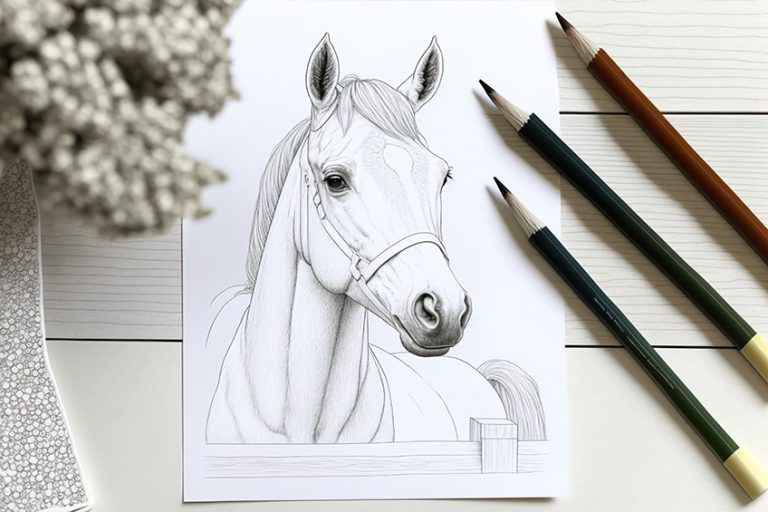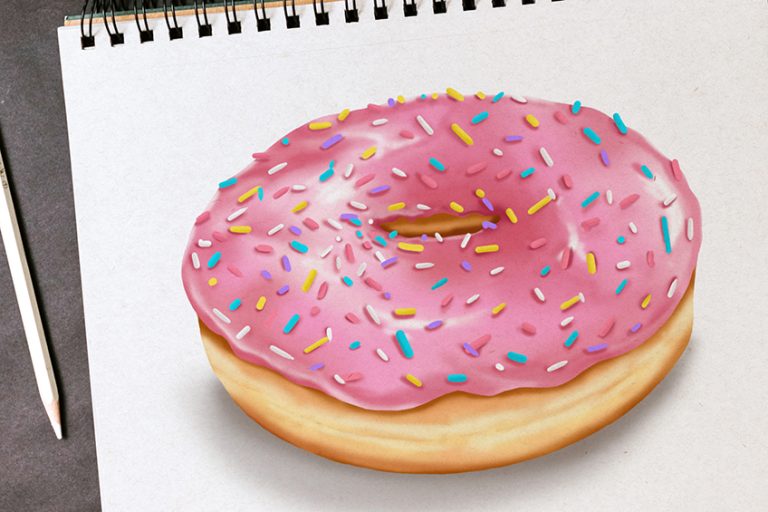Urban Sketching – A Detailed Guide for Beginners
Urban sketching is a fun exercise and one of the most effective ways to enhance your observational drawing skills. Urban drawings, in particular, are one of the most essential skills to learn when looking to improve your ability to draw from life. It’s a great way to also integrate drawings as a daily practice and make a habit of drawing in new spaces. Urban drawings also give you the opportunity to work on different drawings with various time restraints. In some cases, you have to work fast, and in others, you can take your time. Urban sketches also help you to notice details in buildings and spaces, helping you understand a bit better how they work together in uniform to make a single structure. There are many things to gain from urban sketching, which can improve your ability to draw objects in real life.
An Easy Guide to Urban Sketching
Urban sketching seems a little daunting where you approach the drawing process without intention. However, there are many ways to pursue urban drawing for beginners. In this tutorial, we will look at some basic techniques for urban drawing that can improve your skills to draw objects from life. As we work through some simple drawing skills, you will find that the idea of urban sketching is quite a fun activity that can be done anywhere and at any time.
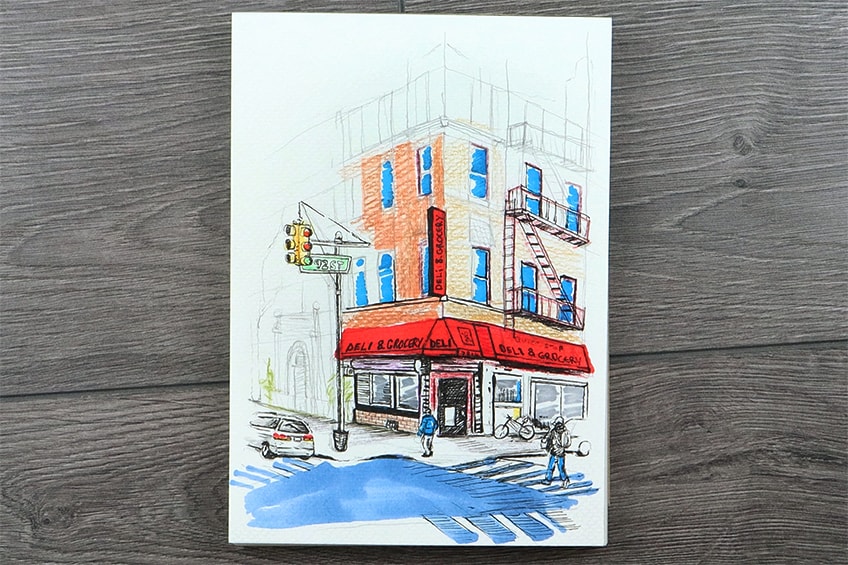
Necessary Materials
Normally, we would find ourselves prepared within a public space to draw a subject before us, this means having some smaller tools can be really useful. You want to consider buying a sketchbook and some drawing materials, such as pens, markers, and pencils. You can also start with simple tools, where you focus on more monochromatic drawings in the beginning.
This way you can also focus on capturing the subject matter without worrying too much about complex color combinations.
This tutorial is done with a digital device, however, all drawing processes can be transferred to traditional drawing tools as well. In this tutorial on urban sketching, we will be going through some basics of learning various techniques for urban sketching, which means we will only need a few simple tools. We will need a pencil and a pen for sketching, as well as an eraser, sharpener, and either paper or a sketchbook. All materials can be found through the links below.
- Ballpoint pen
- Micron pens
- Pencil
- Eraser
- Sharpener
- Paper
How to Create Urban Sketches
In this tutorial on urban sketching for beginners, we will first break down some basic concepts that are helpful to understanding this particular genre of art. We will discuss some core concepts about urban sketching that can help you to better understand the way in which you can approach urban drawings. We will then look at a step-by-step process of how to develop an urban sketch with the use of color.
This will give us more insight into the development of a unique urban sketch and how to utilize colors in a strategic way to enhance our urban drawing.
Urban sketching is a broad genre that encapsulates various practices that may include drawing structures and buildings, but it can also include drawing anything from life. The most important thing about urban sketching is to notice the environment around you and how that may inspire you to draw something. In order to prepare ourselves for such a unique task, we need to understand some key concepts.
Scouting
Once we have some materials the next thing you want to do is consider scouting for a space. Again, urban sketching is not exclusively about drawing buildings, but rather it is about noticing anything in your environment worth capturing.

A large portion of seeking out a subject matter for your urban sketches can include the way people occupy space. This is particularly interesting because we have the opportunity to draw unique individuals in interesting clothing and spaces. We also get to consider finer details and smaller structures, such as clothing material, objects, poses, and various qualities that may be unique to a specific individual.
This is a great way to practice capturing smaller objects and structures in a drawing.
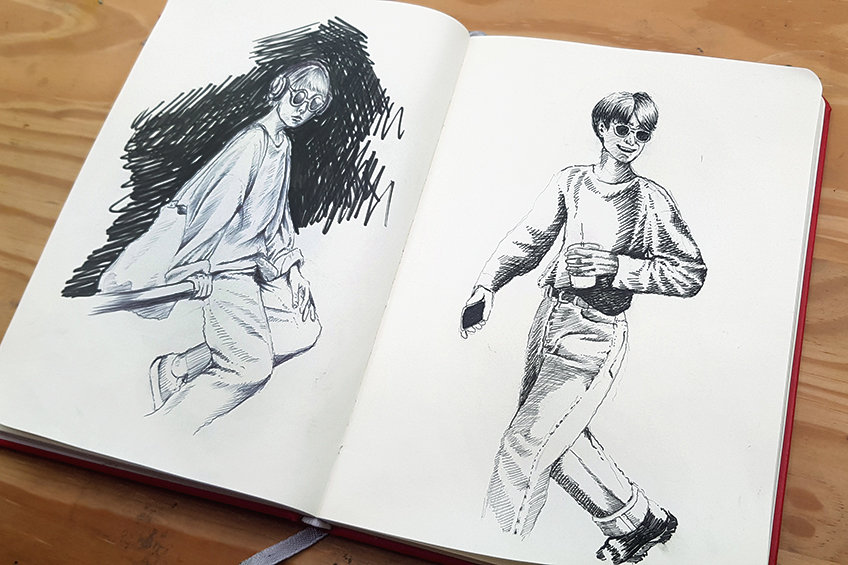
Perspective
Another major part of the urban sketching process is to consider the perspective of the subject matter. This is essential to understand the form and depth of field that you are working with. This will also have an inevitable effect on the formation of light and shadow.

Understanding the rules of one, two, and three-point perspectives will give you better insight into how to form simple three-dimensional structures and then how to refine them into more complex structures. If you were to draw something from the three-point perspective you will find that it gives the environment a unique aesthetic.
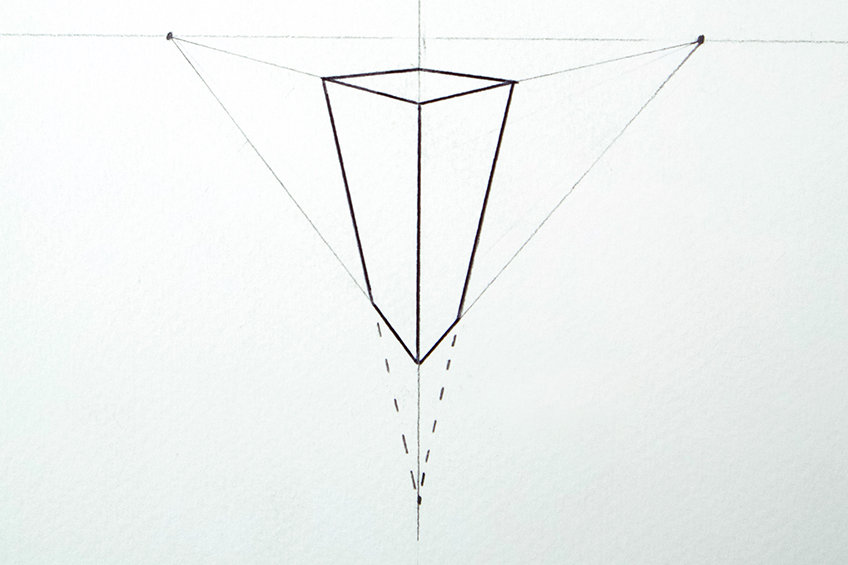
The same can be said for the two-point perspective and one-point perspective, whereby the rules used in either approach will affect the outcome of your drawing. In many instances, you will find that the nature of the subject you are drawing from the angle at which you draw it will inevitably have rules of perspective within the scenario.
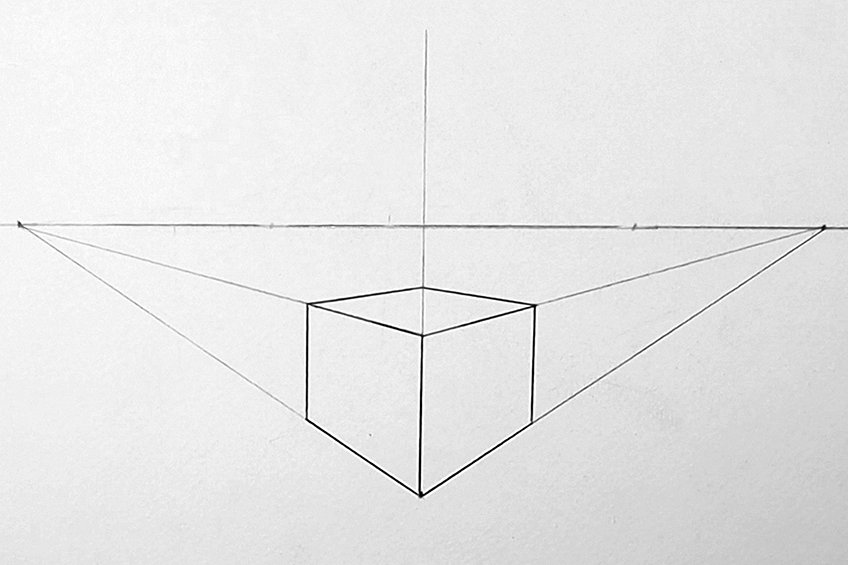
Once you understand these rules, it can make the process of defining the depth of field within an urban sketch quite quick and seamless. Simply by understanding the rules of perspective, you can apply quick guidelines to define spaces much more effectively.
Light and Shadow
With all that has been stated thus far, the most important thing to remember is the concept of light and shadow. With urban sketching, we will find that we will want to emphasize the areas of light and shadow to further contextualize and emphasize the quality of three-dimensionality in our urban sketches.
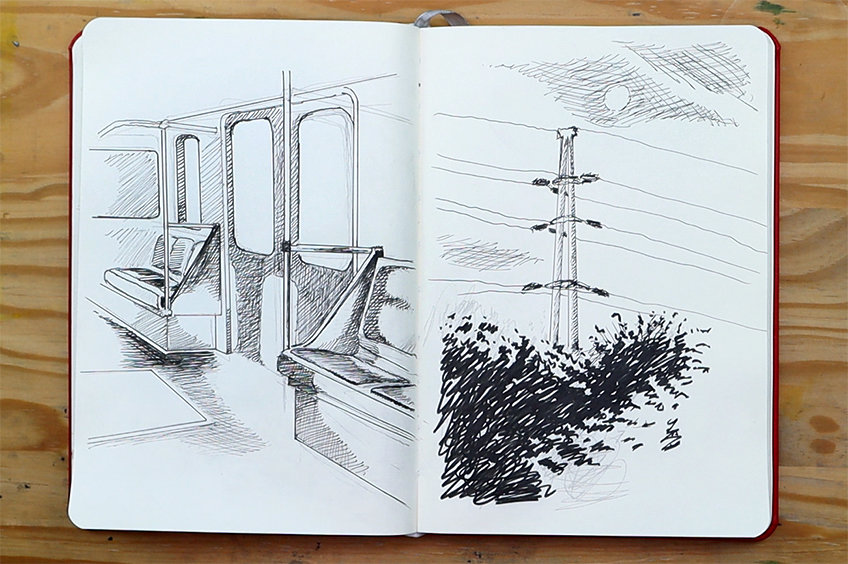
A funny rule to remember in urban sketching is to squint your eyes, thus allowing the shadows and light of a particular environment to be much more blocky in your vision. This gives you the opportunity to understand the general placement of light and shadow and therefore helps you understand where and how to shade more effectively.
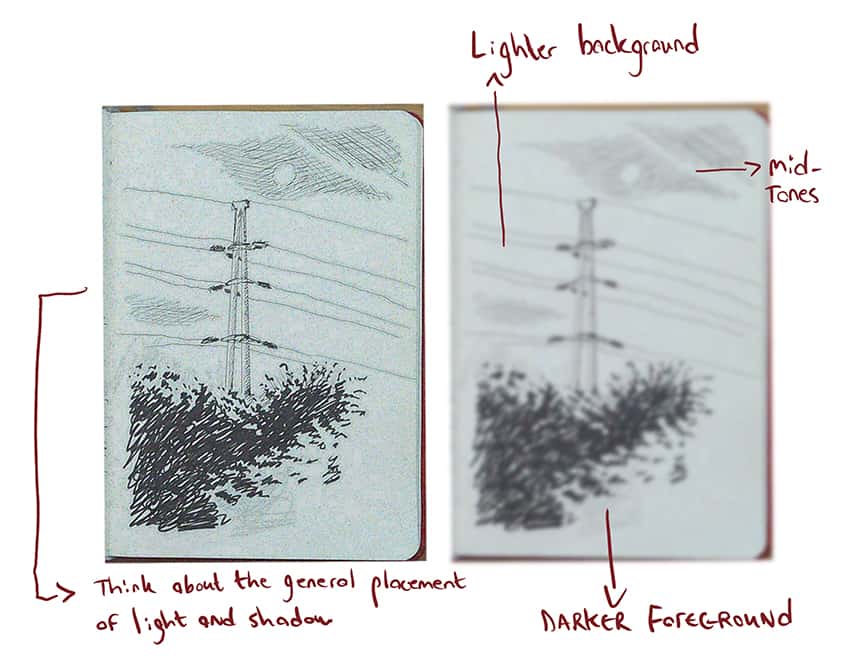
The idea is that you want to first understand the general placement of light and shadow, from there you can refine the details through your shading process with the knowledge of how dark certain tonal values should be.
How to Create an Urban Sketch
Now that we understand some fundamental concepts, let’s go through a step-by-step process of how to create an urban sketch with some color. We will find that the concepts discussed prior are applicable to the process of creating an urban sketch with color.
This time, we are simply using various colors to build up tonal values rather than doing so through just a monochromatic process.
Step 1: Sketching the Scene
We start with a light pencil sketch, where the intention is to sketch out the scenario as simply as possible. When sketching a complex environment with various features, you want to keep it light and vague at first.
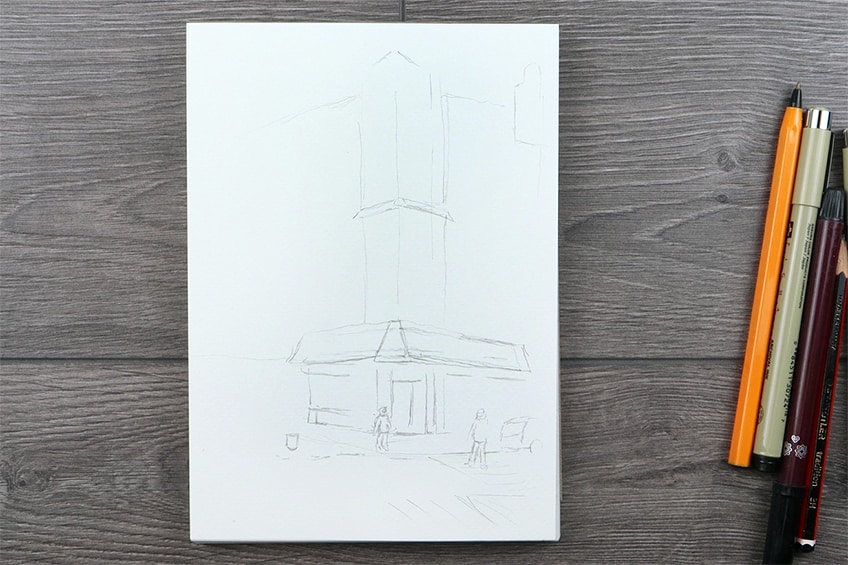
At this point, we can also start to utilize the rules of perspective and should already notice whether the scenario is seen from a one, two, or three-point perspective. In doing so, you can utilize the rules of perspective to give your drawing a more realistic sense of depth.
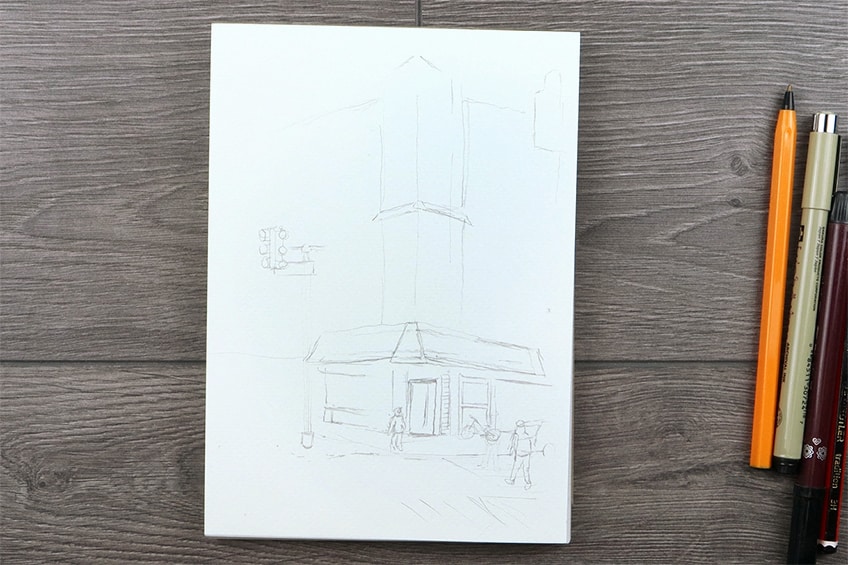
Another way to assist you in the placement of various features is to compare surrounding features to one another which may help you understand scale a little better. Looking at how large features are, compared to one another, will help you to place them more accurately.

Another major part of lightly sketching out the scene is to consider lines of objects. Ask yourself some questions such as: which line moves vertically, horizontally, or diagonally? By doing this, it may help you to place structural lines a little more accurately.
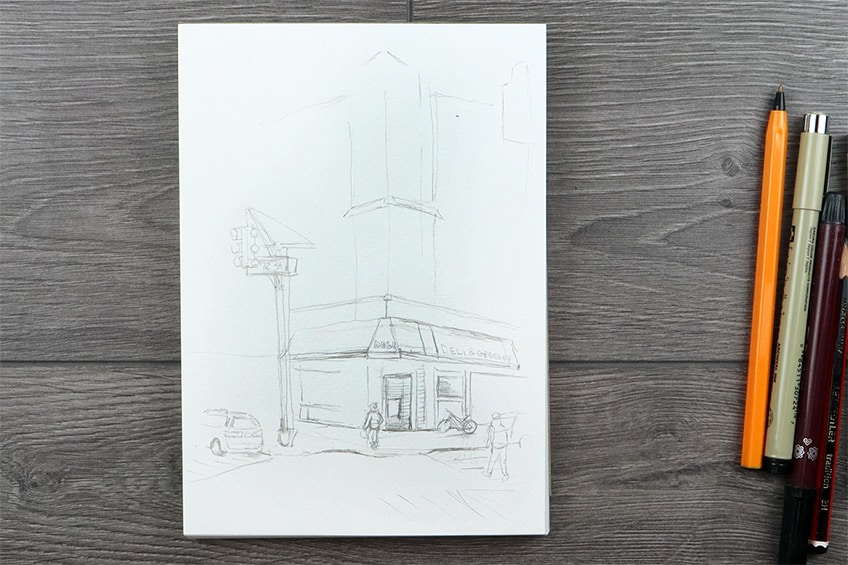
As you build up your sketch with your pencil, you will notice that details are placed along certain planes, depending on the perspective from which you are drawing your environment. This is why understanding perspective rules can assist you with the placement of finer details, such as windows, or how a bicycle sits on the curbside.

However, we shouldn’t worry too much about perfecting details. The beautiful thing about urban drawings is that there will always be discrepancies between your representation of space and the actual space itself. This tends to work in your favor as it gives your work a unique aesthetic.
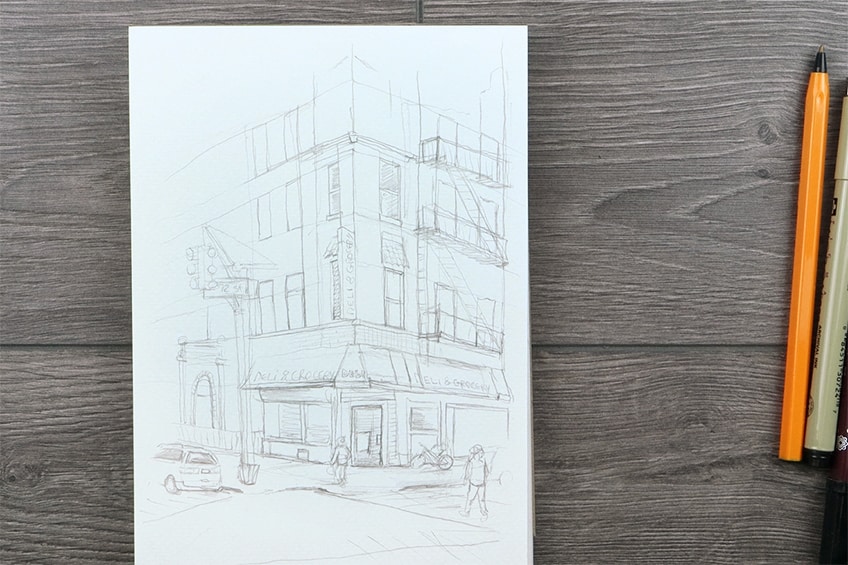
Step 2: Building Up Layers of Color
Once we have established a light sketch of the space, we can now start to build up the tonal values of our environment. This is where we get to play around with color, however, we are trying to pay attention to light and shadow as a way of helping us understand how dark or light we should color certain spaces.

The intention is to always build up tonal values from light to dark, this way you can add darker marks later on as you refine your drawing. Again, thinking about the light source within the space and how this defines features is essential at this point. You can of course recreate color values within your urban sketch, but using the light and shadow present within the actual environment you are drawing is a great way to give your urban drawing a more realistic quality of three-dimensional.
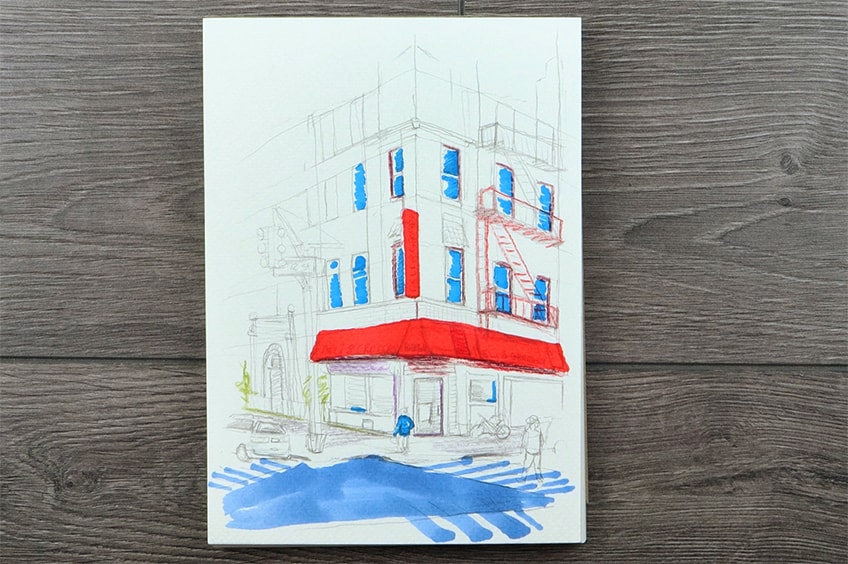
You can also start to use this means of comparing features to help you understand how dark or light a feature should be. What is meant by this is that, if a window seems darker in comparison to the wall surrounding it, consider how that is an indication of how dark or light you should shade those features. However, you can play with simply establishing the base colors of various features at this point.
You also do not need to worry about coloring in the lines, if colors overlap that is okay as it gives your urban sketch a very playful visual quality.

Step 3: Enhancing Features With Linework
At this point, we want to start working on some finer detailing for our urban sketch. This is where using pens and fine-tipped markers becomes a great tool for enhancing details. The idea is to work over the colored features by working in some refined linework and shading to these various features.
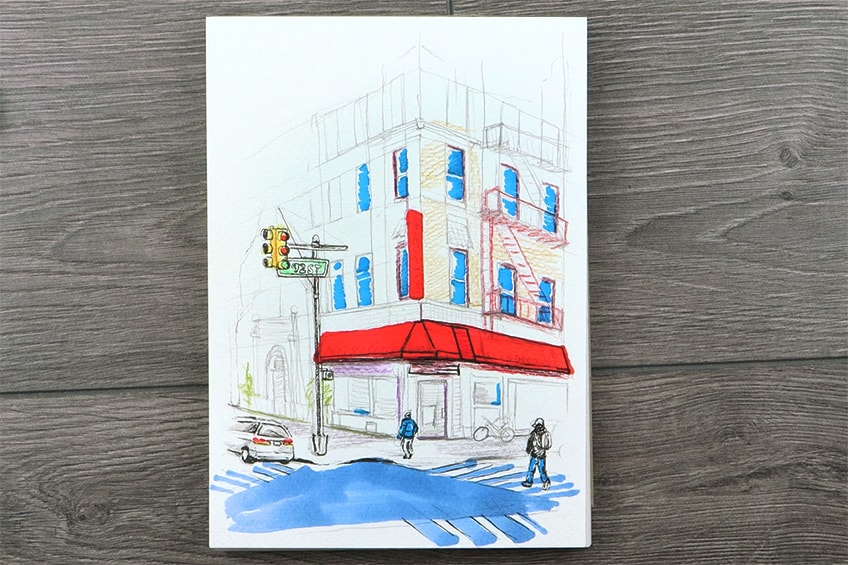
The intention is to continue adding color as you proceed, however, we start refining various features and defining them a little more with some penwork. We don’t want to just outline but we also want to use our pens and markers to add some shading.
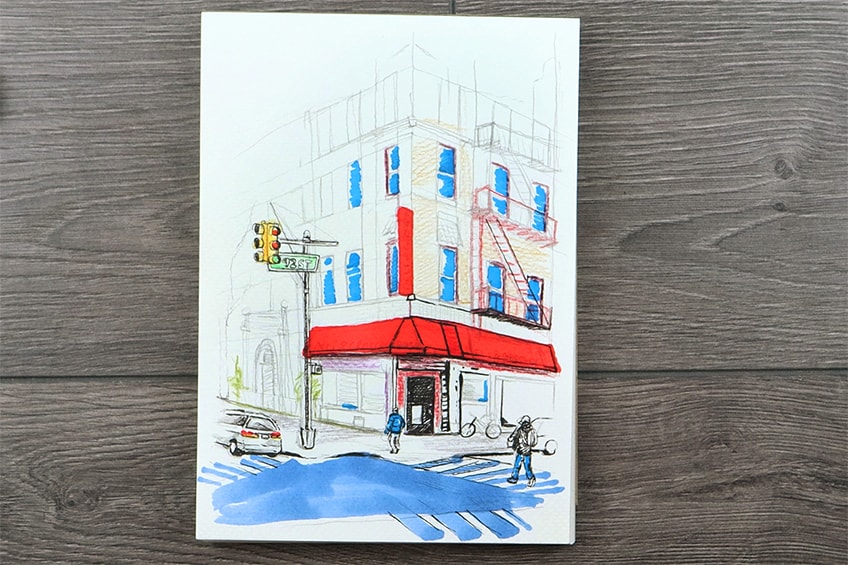
As we continue we can work in darker layers of color in tandem with refining features with linework and pen shading. Again, the most important guiding principle is that of how light and shadow are present within the environment that you are drawing.
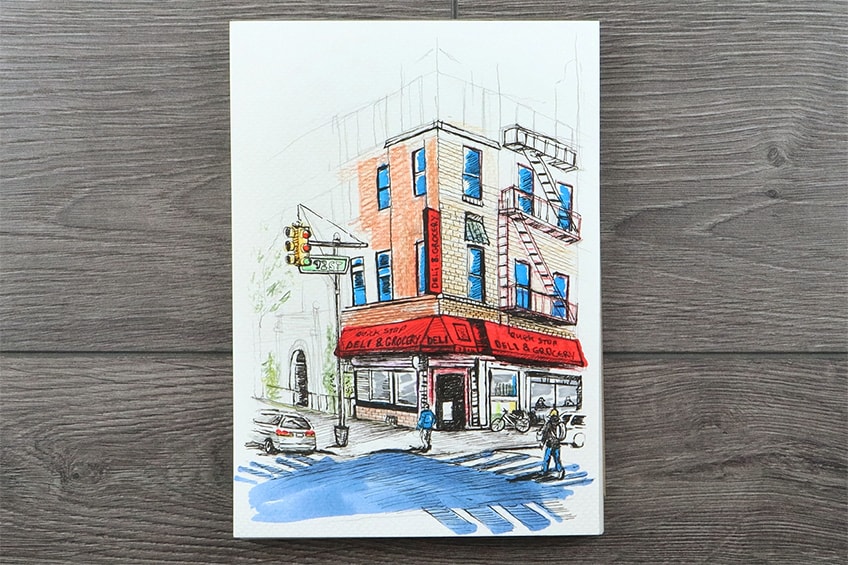
You will find that as you draw over your pencil sketch with some penwork, we can use the pencil lines to define the placement of our penwork. You do want to make sure that you use your pencil work as a way of guiding your pen drawing process.
Step 4: Being Loose With Your Drawing
The most important part of urban sketching is to not forget that you are depicting an environment and there are no rules. This means you can interpret the space as you like, and change details however you choose. However, once you have established a light pencil sketch and have worked in some basic tonal values to represent the areas of shadow and light, you can proceed to build up these layers with colored materials and finer linework.
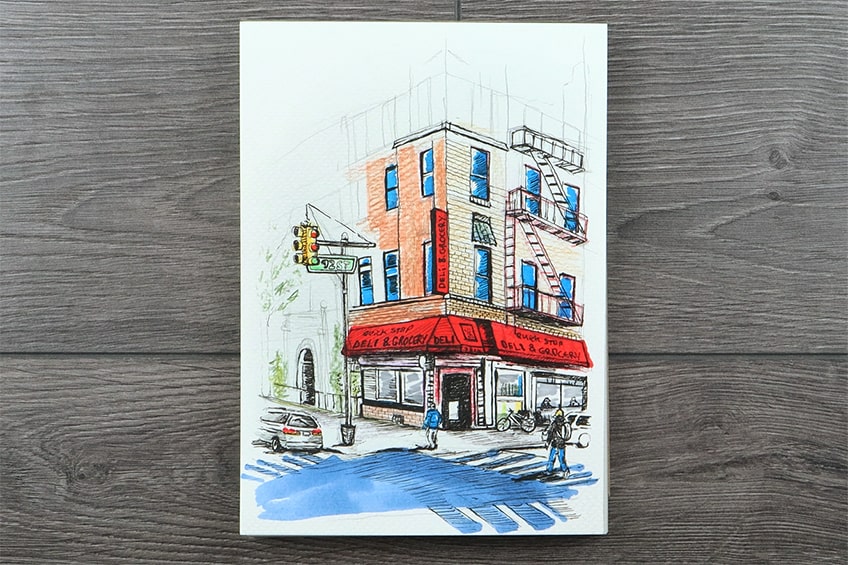
And lastly, consider the style of shading that works with your mediums, this can be cross-hatching, smooth shading, or a painterly style. Again, there are no rules, so have fun, establish the important parts in a sketch, and then play around and experiment from there on.

Otherwise, there you have it! A brief guide on urban sketching for beginners.
This tutorial equips you with the basics and fundamentals that can be used to guide you in your own urban sketching endeavors.
Tips and Tricks to Remember
- Consider spaces that are interesting to you. This doesn’t have to be spaces, but can also be smaller objects and even people.
- Think of the perspective of the space. Inevitably, you will be looking at a space from a particular angle, so think about how to utilize the rules of perspective to assist you.
- Think about light and shadow. Always think about how light and shadow emphasize the three-dimensionality of structures and objects.
- Build up layers of tonal values. When adding color or simply using a monochromatic process, you always want to build up layers from light to dark.
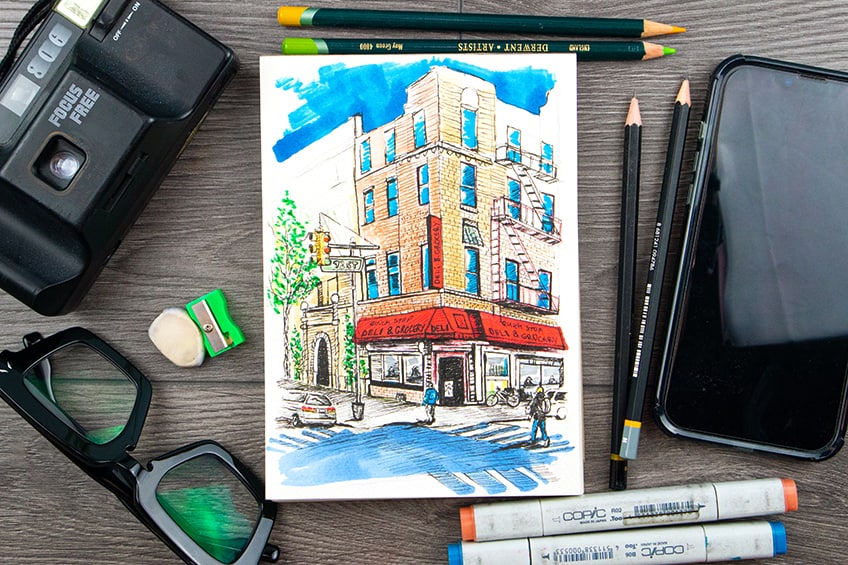
Urban sketching is an interesting genre because you can really allow yourself to represent spaces however you would like. That being said, it can make the process of urban sketching for beginners a little daunting when trying to figure out what to draw. The best way to start is to draw something small and simple, and from there, you can build up toward more complex urban drawings!
Frequently Asked Questions
What Do You Need for Urban Sketching?
It is always a good idea to start simple with urban sketches, and a good suggestion is to work with some pencils and pens. With pencils, you can develop really interesting tonal values that represent light and shadow through a shading process. From there, you can use the pencil marks to guide you in adding darker refined marks with penwork. Pens are a great medium for creating distinct linework and even working with unique shading techniques for urban sketching. Understanding how to represent light and shadow through a monochromatic drawing process will also give you a lot more confidence when looking to create urban drawings in color. So remember, start simple and then build up towards more complex drawing processes.
How Do You Practice Urban Sketching?
Perhaps the best way to practice urban sketching is to make a daily practice out of it. By doing this, you are familiarizing yourself with detailed observations of the world around you. It is important to make a daily practice of observing space and then trying to represent said space within a drawing format. The more often you do it, the stronger the connection between your observations and the skill of representing them through an urban drawing. A good suggestion is to have some sketchbooks on hand with you, so that you can draw wherever and whenever.
Matthew Matthysen is an educated multidisciplinary artist and illustrator. He successfully completed his art degree at the University of Witwatersrand in South Africa, majoring in art history and contemporary drawing. The focus of his thesis was to explore the philosophical implications of the macro and micro-universe on the human experience. Matthew uses diverse media, such as written and hands-on components, to explore various approaches that are on the border between philosophy and science.
Matthew organized various exhibitions before and during his years as a student and is still passionate about doing so today. He currently works as a freelance artist and writer in various fields. He also has a permanent position at a renowned online gallery (ArtGazette) where he produces various works on commission. As a freelance artist, he creates several series and successfully sells them to galleries and collectors. He loves to use his work and skills in various fields of interest.
Matthew has been creating drawing and painting tutorials since the relaunch in 2020. Through his involvement with artincontext.org, he has been able to deepen his knowledge of various painting mediums. For example, watercolor techniques, calligraphy and lately digital drawing, which is becoming more and more popular.
Learn more about Matthew Matthysen and the Art in Context Team.



